The Original Counterfeit
As strange as it might sound, there are counterfeit 1963 Pete Rose rookie cards that are actually worth money.
First off, let’s take a look at what the real card looks like:
Now, compare the front of that card with this one:
The second one is a fake — but it’s awfully hard to tell.
The blue in the top part of the card is the biggest giveaway, though you’d only be able to tell if you had a confirmed original in your hands. There are other tells, such as the fact that the cardboard is apparently slightly thinner quality, as well as a dot somewhere above Ken McMullen (though you can’t see it in this scan).
However, the way you can tell the second card is a fake is from the stamp on the back:
That’s right: this version has “Counterfeit” and “Original reprint” stamped on it.
There are around 10,000 Pete Rose rookie cards stamped like this. And it turns out that they’re actually worth money, despite the fact that they are all counterfeits. As this 19 year old thread explains:
That price estimate seems accurate. The pictures I found above come from this auction page. The card in question went for $20:
So what’s the story?
The best writeup I’ve seen comes from Card Sharks, the 1994 expose about Upper Deck:
In short — the story behind these particular cards is the reason for the price. The cards were determined counterfeit by a judge and were stamped as such by the police department. They were then given back to the counterfeiter, who sold them back into the secondary market — making even more profit.
These aren’t necessarily the first counterfeit cards. They are, however, the first really notorious counterfeit cards. They popped up in the collecting scene in 1981, right in time for the big boom in rookie card interest that marked the 1980s. And, amazingly, they’ve maintained their value despite their relative obscurity.

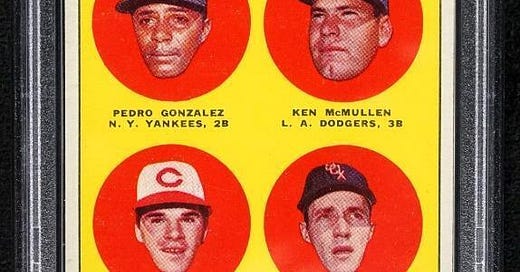



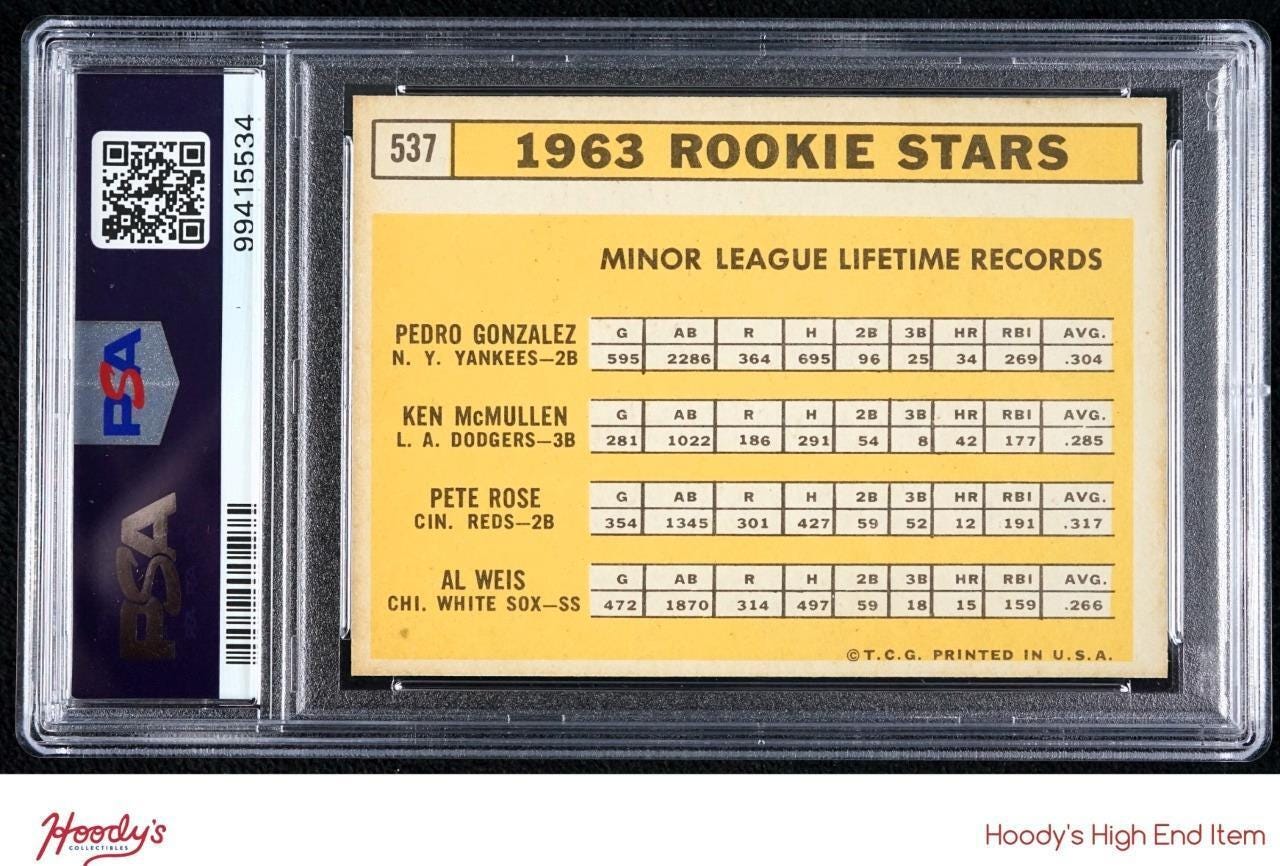
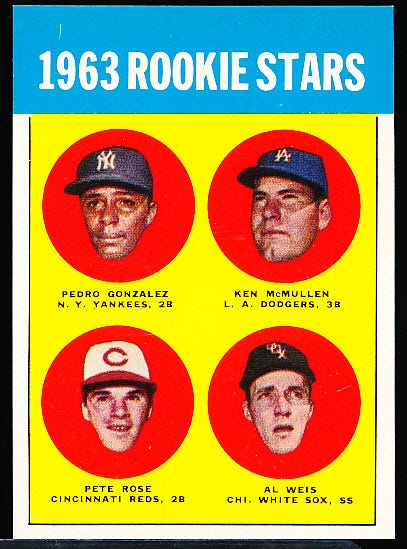
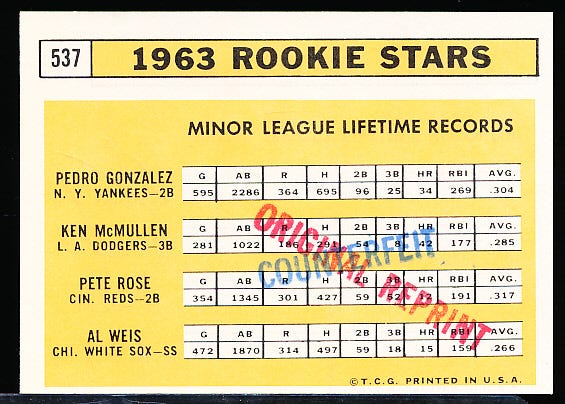


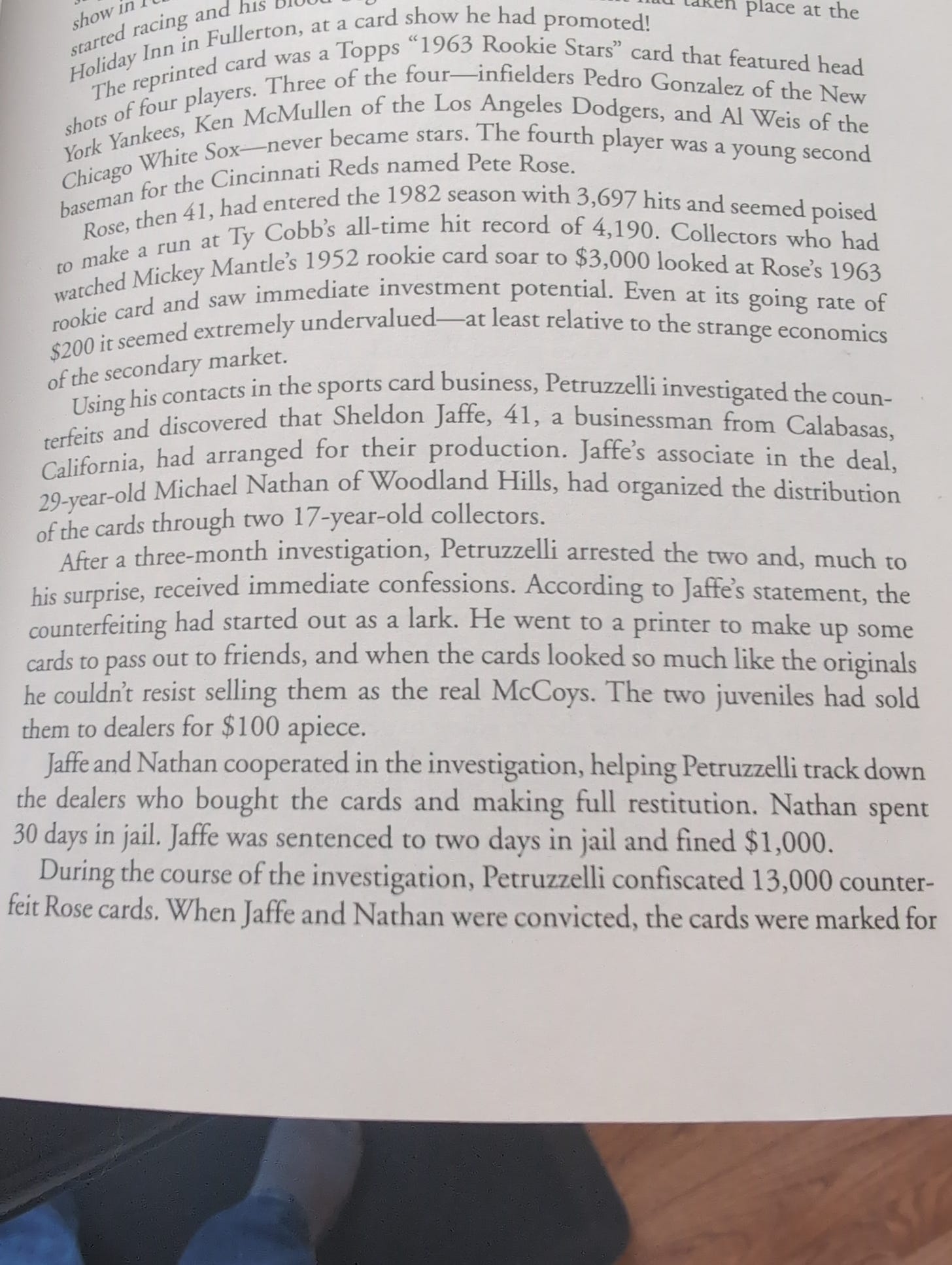
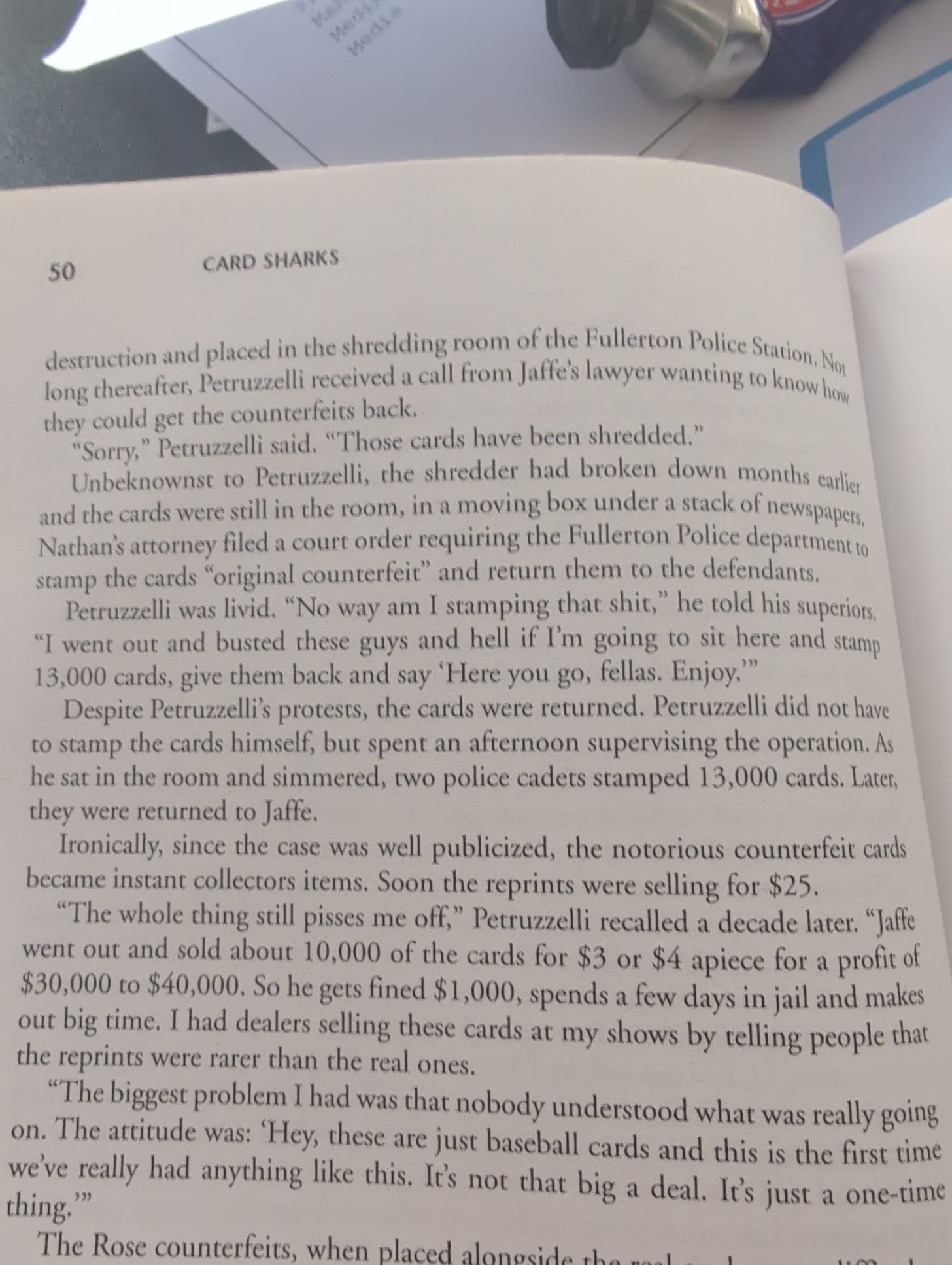
Are there any counterfeit counterfeits yet?